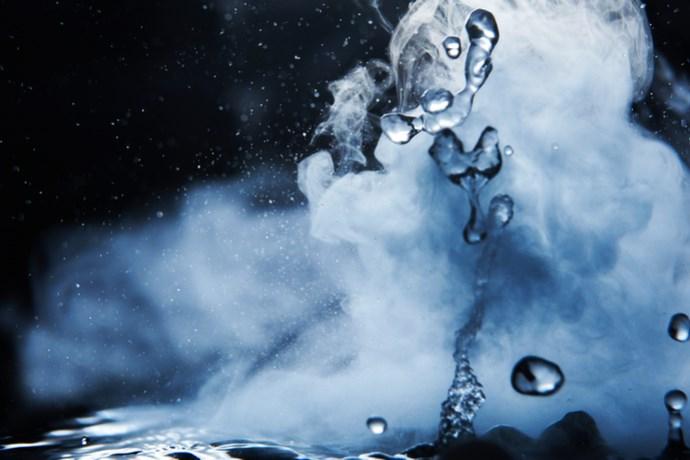The international debate has always touched the technical characteristics of the various possible processes for air purification without focusing on the economic aspects. As a lot of contractors take both environment and balance to heart, we are going to introduce the result of years of research and applications, which allowed us to achieve excellent results in this direction.
It is clear that, especially for production service plants, the impact in terms of investment and in terms of operating costs is an absolutely fundamental choice parameter.
Thermal oxidizer cost: reduction of investments – CapEx
 A first point to consider before starting the dimensioning of the final purification plant refers to the possibility of optimizing the existing aeraulic suction plant for capturing polluted fumes, in order to reduce the volume of emissions to be treated. Although this study may apparently mean additional expenses, it is worth performing it as the capital cost of the final plant is always proportional to the treated air volume (investing in the suction system almost always means reducing the costs of the corresponding abatement plant). Needless to say, in this way operating costs are optimized.
A first point to consider before starting the dimensioning of the final purification plant refers to the possibility of optimizing the existing aeraulic suction plant for capturing polluted fumes, in order to reduce the volume of emissions to be treated. Although this study may apparently mean additional expenses, it is worth performing it as the capital cost of the final plant is always proportional to the treated air volume (investing in the suction system almost always means reducing the costs of the corresponding abatement plant). Needless to say, in this way operating costs are optimized.
Subsequently, it is good to adopt high-performance and cutting-edge technological solutions. With these goals, BrofindⓇ have designed, developed, and tested a series of thermal oxidation systems with high efficiency, able to reduce overall dimensions, weights and, consequently, the costs. Thermal oxidation technology, only a few years ago was considered cost-containing but technically inefficient for those applications with an inlet concentration slightly higher than some hundreds of mg/Nm³. BrofindⓇ modified this technology thoroughly, with the result of obtaining a high-efficiency plant, with a considerably lower cost than the market average values.
The use of a regenerative system with a special ceramic material for heat recovery made it possible to turn this type of plants, the so-called RTO (Regenerative Thermal Oxidizers) into very simple, easy-to-move and mount units, with relevant further benefits on the capital cost.
Thermal oxidizer cost: reduction of operating costs – OpEx
The first step is always to reduce as much as possible, in many cases, even to zero, the consumption of fuel (generally methane) reaching the so-called self-sustaining threshold.
Self-sustaining occurs when the amount of polluting organic compounds present in the air to be purified is sufficient to maintain combustion, without the need for external support gas. Such high performances can easily satisfy the needs of most production lines.
In certain cases, we experienced the trend of having always higher concentrations. New production lines are even more automatic, quick and with emission sucked at their source (on the contrary, some years ago the polluted air was sucked directly from the production point with a large dilution effect).
The trend is reducing the air volumes to purify, with the result of increasing the concentration of the organic compounds. The thermal plants not only become smaller and more self-supporting but they also have to dispose of the excess heat produced by the exothermic pollutant conversion reaction.

This is actually the growth of new challenges and opportunities for plant suppliers, i.e. trying to recover the excess heat and give it back to the customer as useful as possible.
Thermal oxidation: 5 ways to save energy
1. HOT WATER PRODUCTION
By installing a fin exchanger on the stack it is possible to heat the water for its sanitary or industrial use.
2. STEAM PRODUCTION
 If the customer’s steam boiler was a little under dimensioned, it could be useful to add additional steam, but the problem is that the temperature at the stack is usually too low to produce steam, even at limited pressure. BROFIND designed a special plant able to produce steam at a medium pressure, by extracting hot air at 800°C directly from the combustion chamber, by means of a special refractory valve. Such a system can produce steam even when the plant is not running. This extraordinary opportunity makes this solution similar to an actual support or emergency boiler.
If the customer’s steam boiler was a little under dimensioned, it could be useful to add additional steam, but the problem is that the temperature at the stack is usually too low to produce steam, even at limited pressure. BROFIND designed a special plant able to produce steam at a medium pressure, by extracting hot air at 800°C directly from the combustion chamber, by means of a special refractory valve. Such a system can produce steam even when the plant is not running. This extraordinary opportunity makes this solution similar to an actual support or emergency boiler.
3. HEATING OF THERMAL FLUIDS
Thermal oil is often used to add heat to the production cycle. As in the previous case, the temperature of the thermal fluids could be too high to use the purified air at the stack. Under these circumstances, a system has been studied to heat the thermal fluid up to the desired temperature. In certain cases, the cooperation with the final user brought to optimizations or modifications of the heating system, in order to make the recovery easier and cost-effective.
4. COOLING
On certain applications, heat recovery is not as interesting as having frigories available; for this reason, an adsorption plant with lithium salts is usually added, which is the perfect application to produce cooling from heat. It is a very attractive technology, particularly suited to medium and large sized plants.
5. ZERO EMISSIONS

The combustion plant needs no stack anymore because no pollutant is sent into the atmosphere. The whole quantity of outlet purified air is properly conditioned and recycled in the production process.
Regenerative thermal oxidizer operation: the main advantages
- Flexibility in terms of the waste air volume and quantity of solvent that it can handle; the ceramic media compensates for fluctuations by its comparatively large volume.
- Self-supporting plant with a low organic substances concentration and therefore low additional fuel consumption.
- Resistance to high temperatures thanks to the construction materials.
- Extremely low production of secondary contaminants (i.e. NOx, CO).
- The simple plant design and its simple operation mode ensure low maintenance costs and long lifetime.
- Reduced start-up time, thanks to the ceramic packing with a large specific surface and, therefore, reduced necessary quantity.